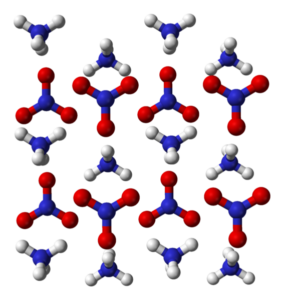This is the follow-on article to: “With cleaner Valley air, there can never, ever be any going back.”
In the earlier post presented was information that consistent with the San Joaquin Valley air becoming less polluted over time (essentially between 1980 and 2016), there has been a far lower incidence of widespread, wintertime fog across the region. Also, introduced was the subject of potential ramifications should the Valley, in this sense, backpedal, that is to say to again experience fog of such an extent that it is not uncommon for the weather phenomenon to linger for months on end.
Today’s discussion, on the other hand, considers – in the face of a growing Valley population what with status-quo development in regards to housing, transportation and the way land is used related to that being what it is – what will need to be done (or not done) so as to avoid an encore of the past. That’s what’s on tap.
This conversation all got started here on the Air Quality Matters blog coincident with the post: “Behind waning Valley fog could be a lack of smoke. What?!” That was back in May 2014.
In this, I opened the post thusly: “In California’s San Joaquin Valley foggy days (and nights) are becoming fewer and farther between. Though the trend’s been gradual, it’s been consistent.”
Okay, so depending on where one stands on the matter, that’s seen either as good or bad news. Disclosure: Certain growers appreciate the chill that the fog brings due to the fact that such helps stimulate plant growth in certain crops which, in those crops, results in greater yields and that translates into improved growers’ bottom lines.
When push comes to shove, though, the reality is that this fog could not only return but resurface with a vengeance provided, of course, the right ingredients and conditions are present.
Those ingredients in this case, according to University of California, Berkeley in its “Falling levels of air pollution drove decline in California’s tule fog” Apr. 10, 2019 press release, are ammonia and oxides of nitrogen or NOx.

Kara Manke in the UC Berkeley press release in question related to this wrote: “Oxides of nitrogen (NOx) react with ammonia to form ammonium nitrate particles, which help trigger water vapor to condense into small fog droplets. Emissions of NOx have declined dramatically since the 1980s, resulting in a decrease in ammonium nitrate aerosols and fog.”
So, now that we know what is behind this, how can we be assured that these substances (chemicals) won’t reappear at the amounts or levels that result in the return of the kinds of fog episodes that were so prevalent between 1930 and 1970?
Well, the trick is to limit the types of activities that are responsible for producing sufficient amounts of these chemicals in the air. However, with population continuing to grow, that could indeed be challenging.
It is worth noting, emission of NOx can come from a variety of sources, both mobile and stationary alike, including: waste incineration; wood-burning; cooking; transportation; energy or power generation; industrial processes; farming and others.
Sources and percentages
The San Joaquin Valley Air Pollution Control District in its 2018-19 Report to the Community gives an annual NOx breakdown in the Valley by source.1 The sources and percentages are:
- Heavy duty diesel trucks – 39%
- Other on-road mobile – 11%
- Farm equipment – 18%
- Stationary source fuel combustion – 11%
- Off-road mobile – 10%
- Trains – 5%
- Other sources – 6%
Meanwhile, in the Valley, mention the word ammonia, and it’s a a good bet that probably coming immediately to mind among a good many is farming.
Given all of the above, what this tells us is that with there being a sufficient-enough increase in the NOx and/or ammonia production or contribution from the respective sources, the school of thought now is that those episodes of widespread Valley tule fog that once so predominated winter days, could again reign supreme.
And, should this ever come to pass, this would be one indication Valley air pollution is again on the rise.
Notes
- Report to the Community, San Joaquin Valley Air Pollution Control District, 2018-19, p. 48
Image above: Ben Mills, Wikimedia Commons
– Alan Kandel
